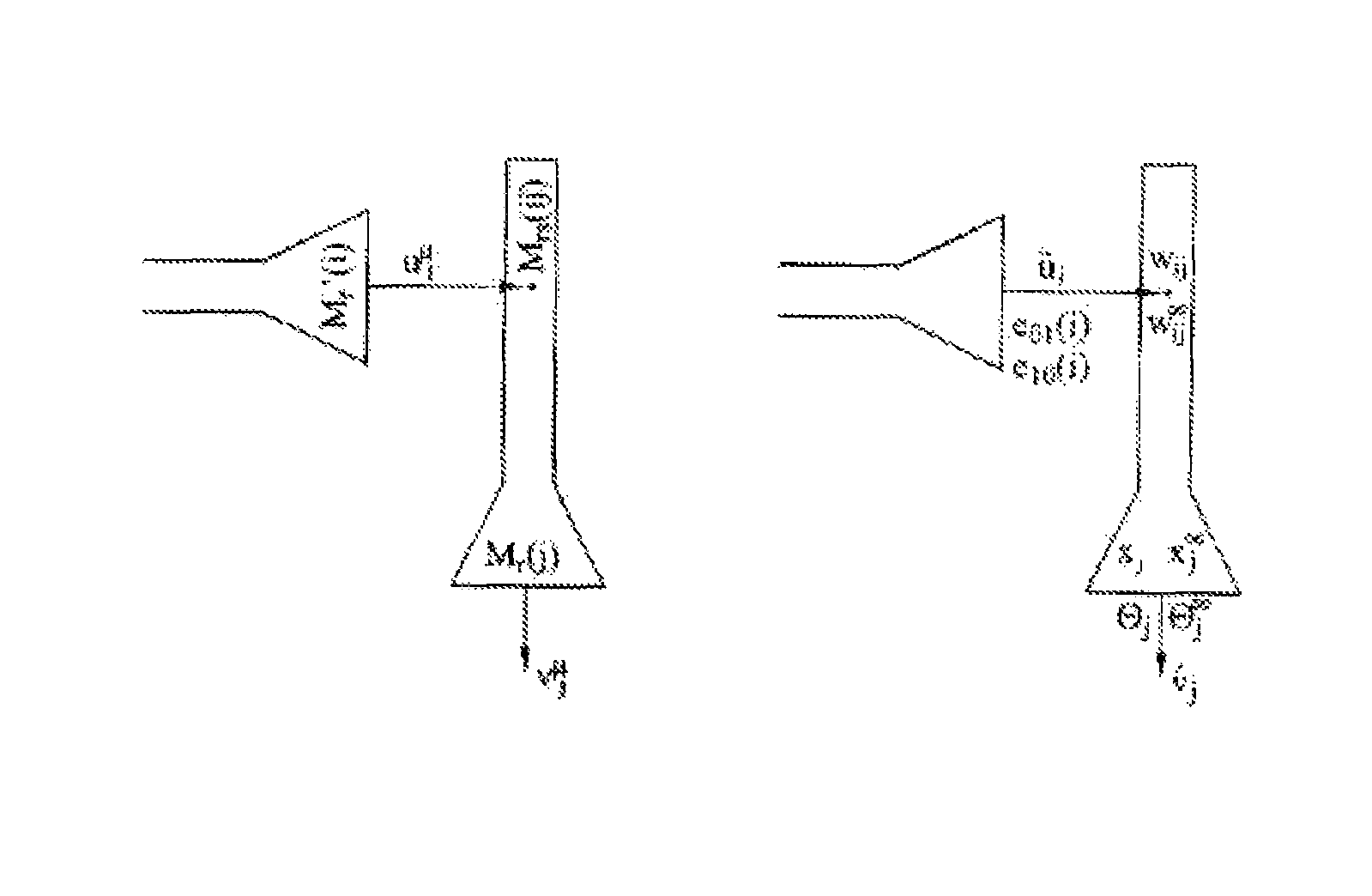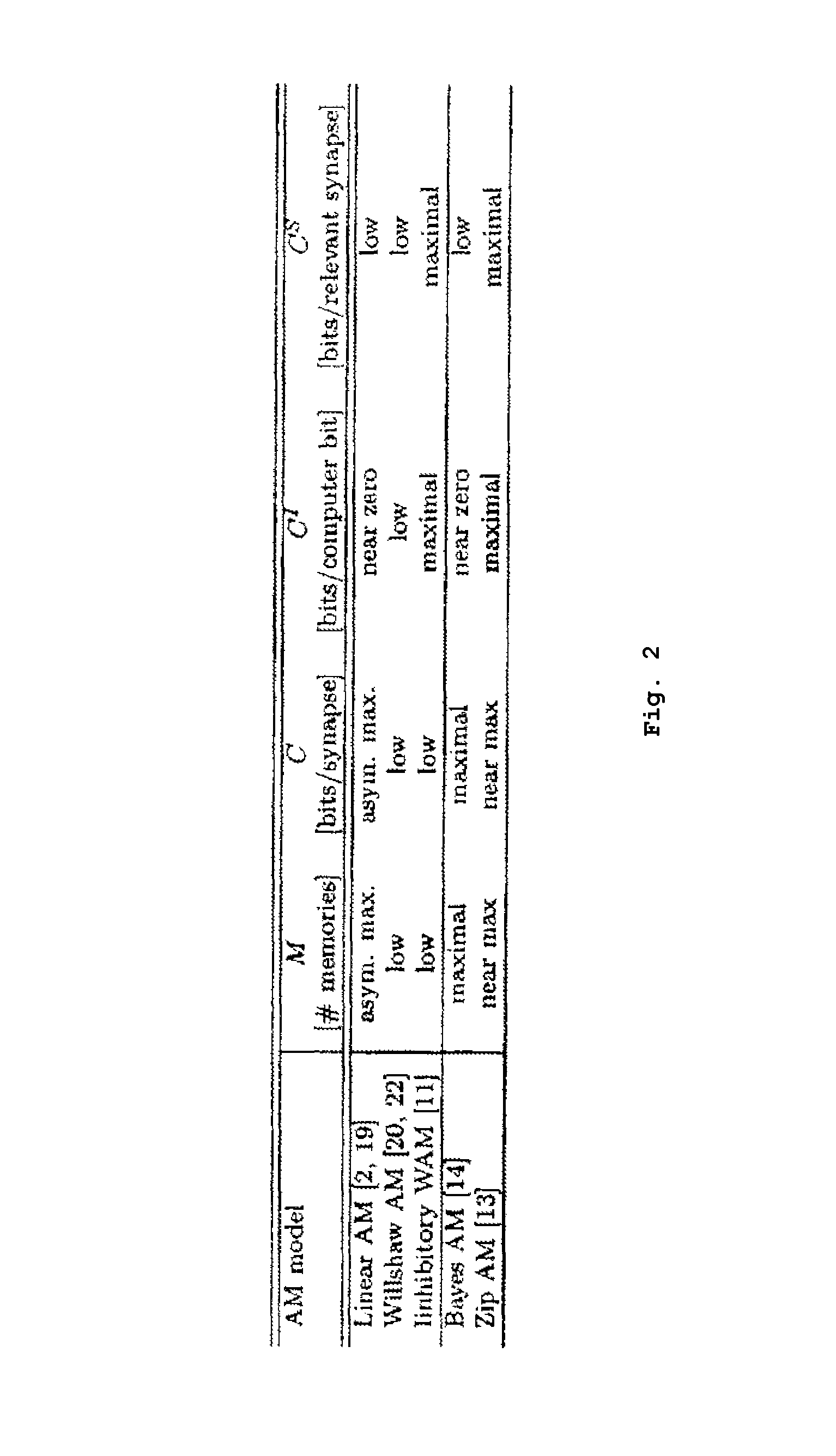Neural associative memories based on optimal bayesian learning
a learning and learning technology, applied in the field of neural associative memories based on optimal bayesian learning, can solve the problems of increasing output noise in these previous memory systems, reducing storage capacity c, and only achieving high theoretical capacities under some artificial assumptions
- Summary
- Abstract
- Description
- Claims
- Application Information
AI Technical Summary
Benefits of technology
Problems solved by technology
Method used
Image
Examples
Embodiment Construction
[0060]Neural associative memory networks as considered by this invention are single layer neural networks or perceptrons with fast “one-shot” learning corresponding to the storage of M discrete associations between pairs of binary pattern vectors {(uμ→vμ): μ=1, . . . , M}. Here uμ is the μ-th memory address pattern being a binary vector of size m. Similarly, vμ is the μ-th memory content pattern being a binary vector of size n. Further define the pattern activities
[0061]kμ:=∑i=1muiμandlμ:=∑j=1nvjμ
are defined as the number of one-entries in the μ-th memory address and memory content pattern, respectively. Finally, k:=Eμ (kμ) and l:=Eμ (lμ) denote the average pattern activities.
[0062]The “one-shot” constraint restricts the set of possible learning methods. For example, gradient descent methods (as error backpropagation) are not viable because they require repeated training of the whole pattern set. Instead it is straight-forward to use simple Hebbian-like learning rules:
[0063]If...
PUM
 Login to View More
Login to View More Abstract
Description
Claims
Application Information
 Login to View More
Login to View More - R&D
- Intellectual Property
- Life Sciences
- Materials
- Tech Scout
- Unparalleled Data Quality
- Higher Quality Content
- 60% Fewer Hallucinations
Browse by: Latest US Patents, China's latest patents, Technical Efficacy Thesaurus, Application Domain, Technology Topic, Popular Technical Reports.
© 2025 PatSnap. All rights reserved.Legal|Privacy policy|Modern Slavery Act Transparency Statement|Sitemap|About US| Contact US: help@patsnap.com



